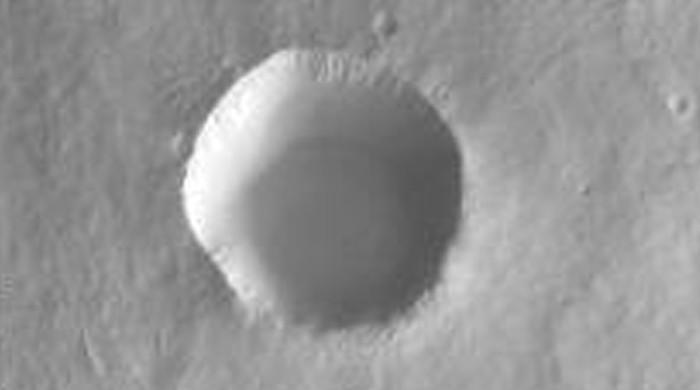



The mystery surrounding methane on Mars continues to intrigue planetary scientists. Methane has been detected in Gale Crater on Mars, but its presence is sporadic and exhibits unusual characteristics. NASA scientists propose that the methane is stored underground and could be released by the weight of the Curiosity rover or by seasonal and daily heating. The source of methane is likely linked to subsurface geological processes involving water. Understanding the origin of methane is crucial as it could serve as a potential biosignature. However, more consistent measurements of methane are required. Scientists believe that future surface spacecraft equipped with multiple testing stations will be necessary to further investigate Martian methane [b5371803].
Mysterious holes have appeared on Mars, speculated to be created by violent volcanoes. These pits could become shelters for future Mars explorers due to the planet's thin atmosphere. The holes provide clues of volcanic activity on Mars, with material flowing to the other side and leaving large tubes behind. The lava in these structures could have flowed billions of years ago. The discovery of a giant volcano on Mars enhances scientists' knowledge of the planet's geology and its history. The finding opens up new horizons for understanding Martian surface formation and its potential effects on early habitability [2f71cbd0].
Scientists recently discovered a hole on the surface of Mars in the Arsia Mons region, known for housing one of the three dormant volcanoes in the Tharsis Montes group. The hole is several meters in diameter and approximately 178 meters deep. Scientists believe that these holes could be the result of volcanic activity. To learn more, researchers are considering sending a robot to explore the hole. In other Mars-related news, NASA's Mars rover, Curiosity, found evidence of a habitable environment in Gale Crater, including manganese oxide, which suggests the presence of oxygen and the potential for life on Mars [0ee6cf5b].
Scientists have discovered a mysterious pit on the side of an ancient volcano on Mars, generating excitement for what it may reveal beneath the Red Planet's surface. NASA's Perseverance Mars rover also discovered strange stones that have never been seen before on Mars. Two test pilots on Boeing's Starliner spacecraft are in a tentative position due to spacecraft issues. A Russian rocket fired by troops from the left bank of the Dnipro River hit a hospital in Ukraine's Kherson. Two US astronauts will be stranded on the International Space Station for longer than planned due to faults with the Boeing spacecraft. Researchers have developed a new method to prevent AI from hallucinating. NASA is planning to launch an artificial star into space to imitate celestial objects. Astronomers have observed a supermassive black hole waking up for the first time. Human missions to Mars are in doubt after astronaut kidney shrinkage was revealed. Future space missions may require more involved medical care in space. Good Morning Britain was halted for a breaking news announcement.
In a major breakthrough for space exploration, Pulsar Helium has discovered a significant helium deposit in Babbit, Minnesota. This is the largest helium find in North America and could potentially revolutionize future space missions. Helium is a crucial component in aerospace, used for rocketry and detecting leaks. The worldwide shortage of helium has been a concern, with factors such as the Russia-Ukraine war and maintenance issues at production facilities contributing to the scarcity. The helium deposit in Minnesota is a world-class well, with a flow rate of 821,000 cubic feet per day. This discovery provides a new source of helium that could alleviate the shortage and support future space explorations [23d1010c].